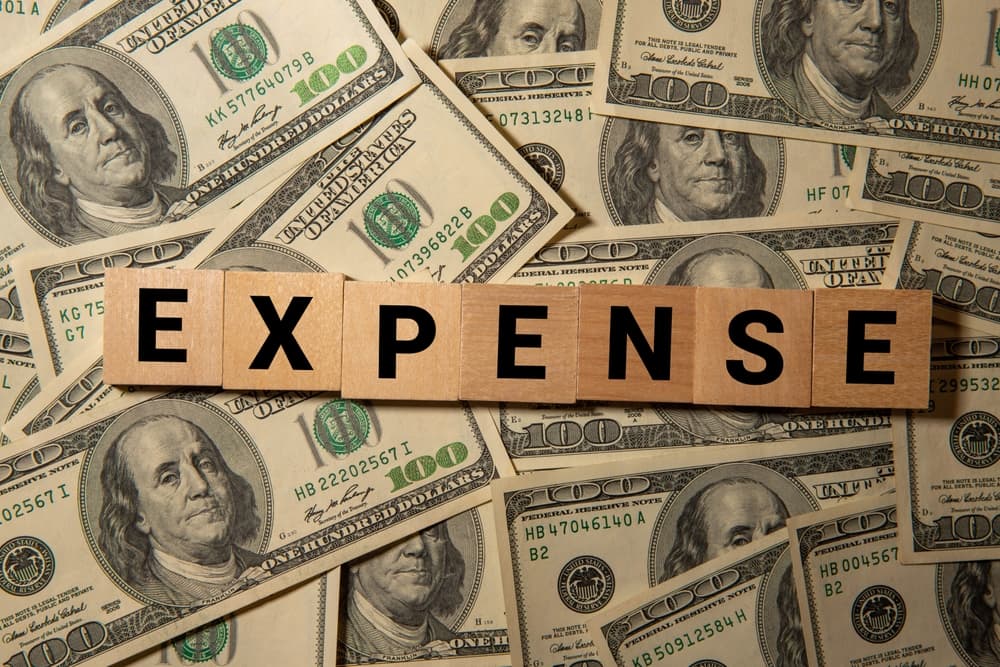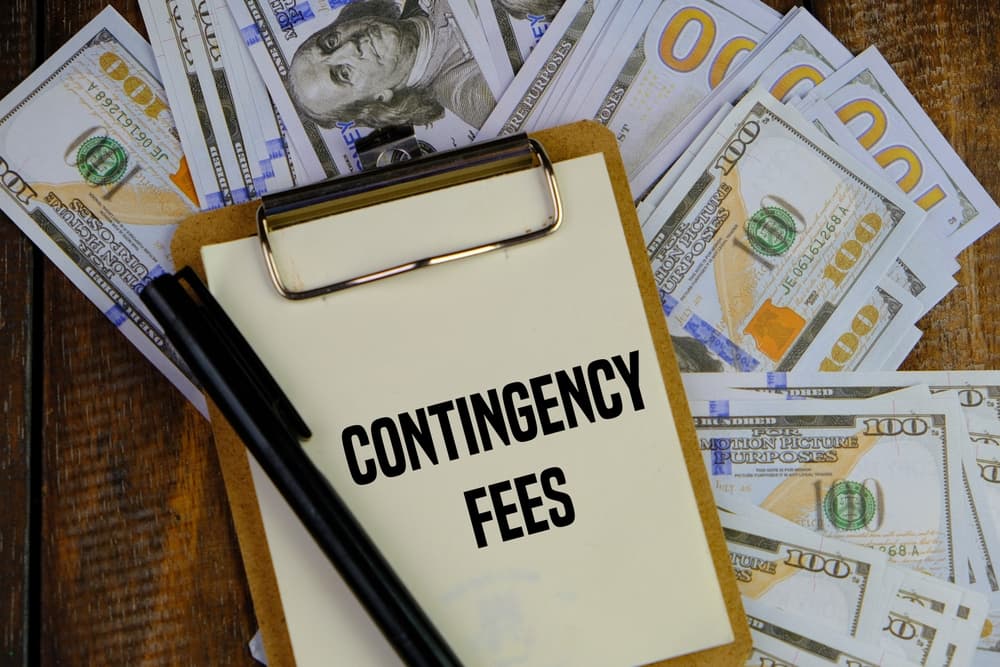Suffering an injury because of someone else's negligence creates immediate concerns. Medical bills are piling up, lost wages affect financial stability, and the uncertainty of the legal process only adds stress to an already difficult situation.
Many people hesitate to contact a lawyer, worried about the cost of legal representation. However, personal injury attorneys typically work on a contingency fee basis, meaning legal fees only come out of a successful settlement or verdict.
So, what percentage do most personal injury lawyers take? Most attorneys handling personal injury cases charge between 33% and 40% of the final compensation amount. While this percentage remains standard, several factors influence the exact fee, including case complexity, the likelihood of trial, and regional variations.
Understanding how contingency fees work can help you make informed decisions when choosing legal representation. The right lawyer should provide clear answers about their fee structure and offer a free consultation to discuss options. Contact a personal injury attorney near you today for a free consultation, where you can discuss your rights and options for obtaining compensation as well as the attorney’s fee structure.
Injured? Get Nicolet.
Standard Contingency Fee Percentages
Most personal injury lawyers take a percentage of the final settlement. If a case requires litigation, the percentage may increase. The exact fee depends on the amount of work required to obtain compensation.
How Fees Vary Based on Case Complexity
Cases that settle early through negotiations typically remain at the lower end of the fee range, while those requiring expert testimony, depositions, and court proceedings often justify a higher percentage. The more legal resources a case requires, the higher the contingency fee is likely to be.
Fee Differences Between States
State laws, local market rates, and court procedures influence contingency fees. Some jurisdictions impose fee limits for certain case types, such as medical malpractice claims or lawsuits against government entities. While most states allow attorneys to set their fees within a reasonable range, variations exist based on local legal standards and regulations.
Factors That Influence Fee Percentages
Several factors determine the contingency fee percentage a personal injury lawyer charges. While 33% is common, this percentage may increase depending on the complexity of the case, the time required to resolve it, and whether a settlement is reached or litigation becomes necessary.
Case Complexity and Resources Needed
Cases involving severe injuries, disputed liability, or multiple defendants require more legal work. Lawyers may need to gather extensive evidence, hire expert witnesses, and conduct depositions, all of which increase the effort and risk involved. When more resources are necessary, contingency fees may be on the higher end of the standard range.
Expected Timeline for Resolution
Some claims settle in a matter of months, while others take years due to delays from insurance companies, legal disputes, or court backlogs. A longer case timeline often means higher legal expenses and more hours spent on litigation, which can impact the fee percentage.
Settlement vs. Trial Probability
Insurance companies often undervalue claims or refuse to offer fair settlements. When that happens, attorneys must file a lawsuit, conduct discovery, and prepare for trial. The increased workload and higher risk of litigation may result in a higher contingency fee if the case moves beyond pre-trial negotiations.
Case Value and Potential Recovery
Higher-value claims often involve more aggressive defense strategies, requiring additional legal work. Some attorneys use a sliding scale contingency fee, charging a lower percentage for larger recoveries while taking a higher percentage for lower-value cases to account for the effort involved.
Lawyer’s Experience and Reputation
Attorneys with a history of successful verdicts and settlements may charge higher fees. Their experience handling complex cases and insurance negotiations often leads to stronger case results, justifying a higher percentage within the standard range.
Fee Structure Breakdown
Contingency fees follow a tiered structure, meaning the percentage a lawyer takes may depend on how far the case progresses. A standard agreement outlines different fee percentages based on case milestones, legal expenses, and potential trial or appeal costs.
Pre-Litigation vs. Post-Filing Fees
Before filing a lawsuit, most attorneys charge 33% of the settlement amount. If negotiations fail and a lawsuit is necessary, the fee often increases to 40% to account for the additional legal work required.
Additional Costs for Trial and Appeals
When a case moves to trial, the attorney must present evidence, question witnesses, and argue the case in court. If an appeal follows, further legal work becomes necessary. Some attorneys adjust their contingency fees to reflect the increased time and effort required for courtroom litigation.
Handling Case Expenses
In addition to the contingency fee, law firms incur case-related expenses, including:

- Court filing fees
- Expert witness fees
- Deposition costs
- Medical record retrieval expenses
- Accident reconstruction reports
Some attorneys advance these costs and deduct them from the final settlement, while others require clients to cover certain expenses upfront. Discussing cost responsibility before signing a legal agreement prevents unexpected deductions later.
Fee Caps in Certain Cases
Some states impose limits on contingency fees, particularly for medical malpractice, workers’ compensation, and class action lawsuits. These caps ensure that attorneys do not take an excessive portion of a client’s compensation, especially in high-value cases.
Class Action and Mass Tort Fee Restrictions
In class action lawsuits, courts often approve or limit attorney fees to ensure fairness for all plaintiffs. Some mass tort cases, such as pharmaceutical injury claims, may have pre-determined limits set by federal or state courts.
Government Claims and Fee Restrictions
Lawsuits against government entities sometimes include statutory caps on attorney fees. If a state or municipal law limits total compensation in a case, an attorney’s percentage may also be restricted.
Understanding fee caps helps injury victims know what to expect before signing a legal agreement. If a case falls under a capped category, the lawyer should provide a clear breakdown of how fees apply.
Questions to Ask Your Lawyer
Before signing a contingency fee agreement, injury victims should ask their lawyer important questions to ensure transparency and avoid surprises. The right attorney will provide clear answers about fees, case expenses, and payment expectations.
Is the Fee Negotiable?
Some attorneys offer flexibility in their contingency fees, especially for high-value cases or claims that are likely to settle quickly. While many personal injury lawyers stick to the standard 33%–40% range, discussing fee options upfront ensures clarity.
How Are Case Expenses Handled?
Legal fees cover the attorney’s work, but case-related expenses are separate. These costs may include:
- Court filing fees
- Deposition and expert witness fees
- Medical record retrieval costs
- Investigation expenses
Some law firms advance these costs and deduct them from the final settlement, while others require clients to cover certain expenses as the case progresses. Asking about who pays for these costs and when prevents unexpected deductions later.
Are Sliding Scale Options Available?
Some attorneys use a tiered fee structure based on case value. A lawyer may charge a lower percentage for higher settlements or adjust fees depending on whether a case settles early or requires litigation.
What Happens if the Settlement Is Low?
If a case results in minimal compensation, some attorneys reduce their fee percentage to ensure the client receives a fair share of the recovery. Others may still take their full percentage, which could significantly impact the amount the client receives. Asking about this upfront helps set expectations.
A contingency fee agreement should clearly outline all potential costs and deductions. A lawyer who takes the time to explain these details helps clients make informed decisions.
The Value of Contingency Fees

Contingency fee arrangements allow injury victims to pursue legal action without worrying about upfront costs. Instead of paying hourly legal fees, clients only owe attorney fees if compensation is recovered through a settlement or court verdict. This structure makes legal representation accessible, even for those who cannot afford to pay out of pocket.
No Upfront Costs
Since personal injury lawyers work on contingency, clients do not need to pay legal fees in advance. This removes financial barriers and ensures that anyone injured due to someone else’s negligence has the opportunity to seek justice.
Lawyer and Client Share the Same Goal
When an attorney’s payment depends on the outcome of the case, both the lawyer and the client are motivated to pursue maximum compensation. This alignment encourages attorneys to build strong cases, negotiate aggressively with insurance companies, and take cases to trial when necessary.
No Recovery, No Fee
If an attorney does not secure compensation, the client does not owe legal fees. This arrangement shifts the financial risk away from the client and onto the law firm, giving injury victims confidence in pursuing a claim without the fear of owing money regardless of the outcome.
Contingency fees make quality legal representation available to everyone, ensuring that accident victims can fight for the compensation they deserve.
What Happens If a Lawyer Withdraws From the Case?
In some situations, a personal injury lawyer may withdraw from a case before it reaches a settlement or verdict. This can happen for several reasons, including conflicts of interest, a breakdown in communication, or new evidence affecting case viability.
Reasons a Lawyer May Withdraw
A lawyer may decide to withdraw from a case if:
- A conflict of interest arises that prevents them from ethically continuing representation.
- The client refuses to follow legal advice or takes actions that undermine the case.
- The lawyer determines the case lacks merit after new evidence comes to light.
- Non-cooperation from the client makes it impossible to move forward.
- Financial or logistical issues prevent the law firm from dedicating resources to the case.
Do Clients Owe Fees if a Lawyer Withdraws?
If a lawyer withdraws before securing compensation, the client typically does not owe contingency fees because the agreement is based on recovery. However, the firm may request reimbursement for case expenses already incurred, such as fees for obtaining medical records, expert consultations, or court filings.
Finding New Representation After a Lawyer Withdraws
If a lawyer withdraws, the client can seek new legal representation. Some law firms may be hesitant to take over a case that another attorney has dropped, especially if the withdrawal was due to case weaknesses or client cooperation issues. Discussing the case with a new attorney as soon as possible helps prevent delays.
What Happens If Multiple Law Firms Work on a Case?
Some personal injury cases involve more than one law firm, particularly when the claim is complex or requires specialized legal knowledge. When multiple firms collaborate, they typically share responsibilities and divide legal fees according to an agreement.
When Do Multiple Law Firms Work on a Case?
A personal injury claim may involve more than one firm in situations such as:
- Referral Agreements: If an attorney refers a case to another law firm with more experience in a particular type of claim (e.g., medical malpractice or product liability), they may share a percentage of the contingency fee.
- Co-Counsel Agreements: In high-stakes cases, two or more law firms may work together, pooling resources to strengthen the case.
- Local Counsel Assistance: If a case is filed in a different state, an out-of-state firm may partner with a local attorney to comply with jurisdictional rules.
How Are Contingency Fees Divided?
When multiple firms handle a case, the contingency fee remains the same for the client. The firms split the agreed-upon percentage based on their contributions. For example, if the total contingency fee is 33% of the settlement, one firm may receive 20% for handling litigation, while the other firm takes 13% for referring the case. The exact division depends on the firms’ agreements.
Does Having Multiple Firms Affect the Client’s Compensation?
No. The contingency fee remains the same whether one or multiple firms are involved. The lawyers split the fee among themselves, so the client’s share of the settlement does not change.
Contact Nicolet Law Accident & Injury Lawyers

Choosing the right attorney makes a difference in the outcome of a personal injury claim. Discussing legal fees upfront ensures transparency and prevents surprises.
At Nicolet Law Accident & Injury Lawyers, we fight for maximum compensation for our clients. Our attorneys have handled thousands of injury claims, holding insurance companies and negligent parties accountable. We operate on a contingency fee basis, so clients never worry about upfront costs.
Contact Nicolet Law Accident & Injury Lawyers today for a free consultation and let us help you secure the compensation you deserve.
